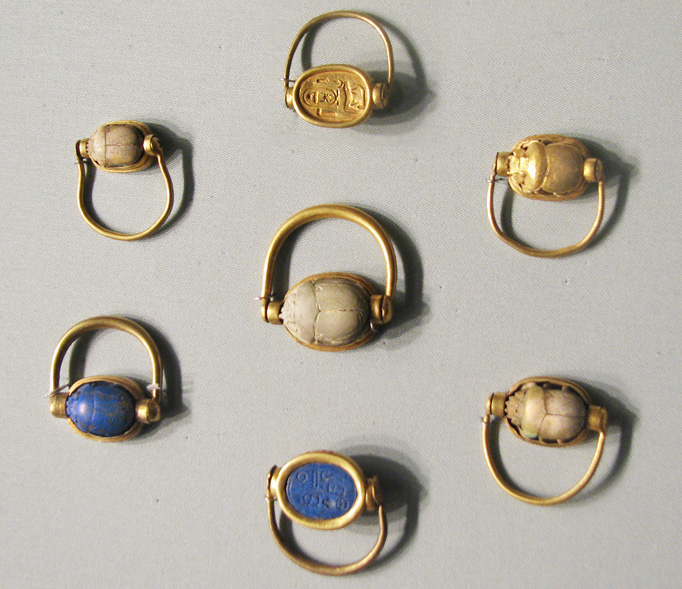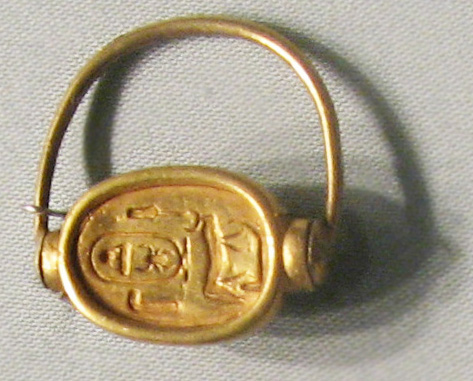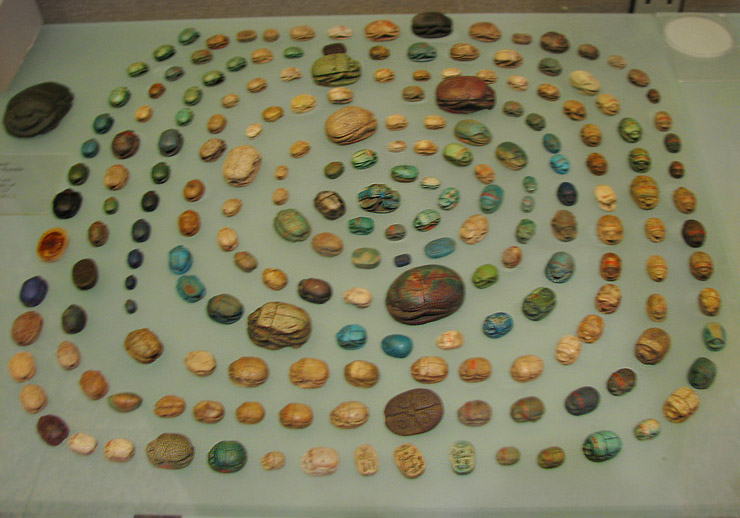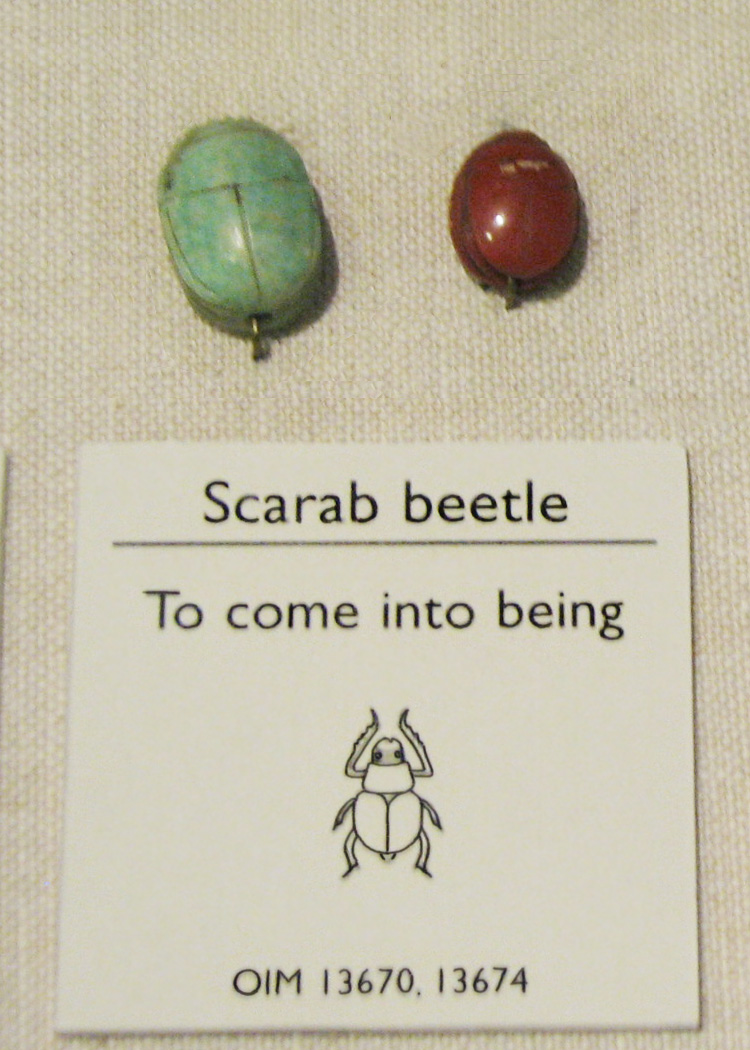
Finger Rings (Arranged) at Metropolitan Museum
Dynasty 18, reign of Thutmose III (ca. 1479-1425 BCE)
Gold, lapis lazuli, glazed steatite
From the tomb of the three minor wives of Thutmose III in the Wady Gabbanat el-Qurud, Thebes
Purchase, Edward S. Harkness Gift, 1926 (26.7.759-765)
"The scarabs in these rings are all inscribed with the name of Thutmose III:

(Detail showing Thutmose III's cartouche with his throne name "Menkheperre")

"Lasting is the manifestation of Re", "Eternal is the coming-into-being of Re"

